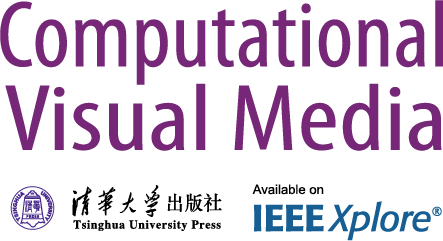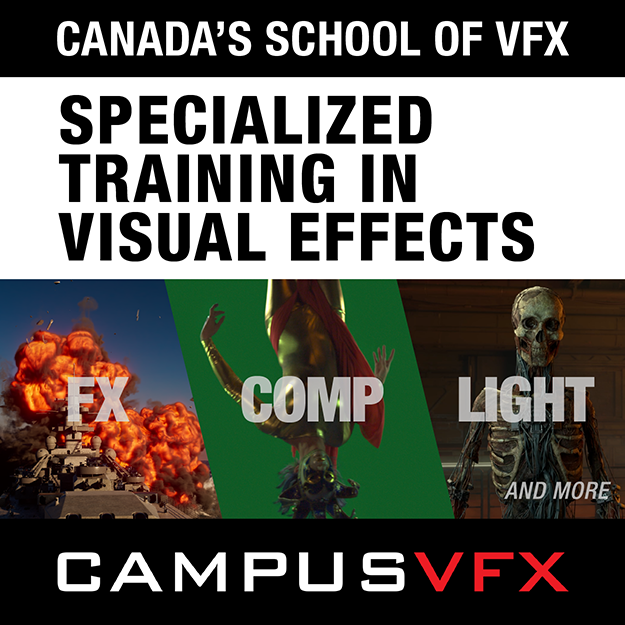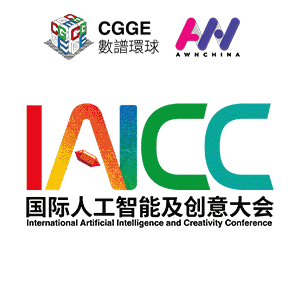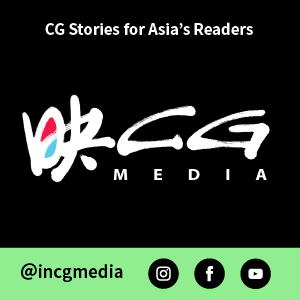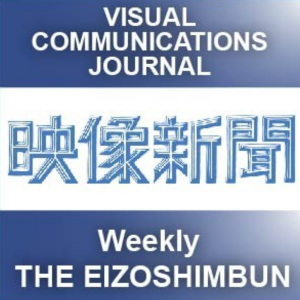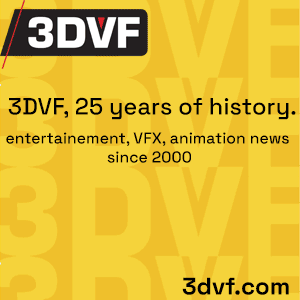Important Deadlines:
– Deadline: 16 May 2025 (Closed)
– Paper Deadline: 23 May 2025 (Closed)
– Upload Deadline*: 24 May 2025 (Closed)
*For files with MD5 checksum submitted by Paper Deadline
Submit To the Technical Papers program!

At SIGGRAPH Asia 2025, the Technical Papers program will have two integrated paper tracks: Journal (ACM Transactions on Graphics) and Conference.
- Journal Papers are expected to satisfy the ACM TOG criteria of excellence established over the years, and present novel, well-validated, and comprehensively described research advancing computer graphics and interactive techniques. Papers accepted to the Journal track will be published in the SIGGRAPH Asia 2025 issue of ACM Transactions on Graphics (TOG).
- Conference Papers are expected to present novel research advancing computer graphics and interactive techniques. However, the evidence supporting these advances might not be as comprehensive as expected for Journal Papers. The length of papers accepted to this track is capped as outlined in the “Journal vs. Conference” table below. Papers accepted to the conference track will be published in the SIGGRAPH Asia 2025 Conference Proceedings.
| JOURNAL-ONLY SUBMISSIONS | DUAL-TRACK SUBMISSIONS |
|---|---|
| The submitted work is expected to be novel and advance the state of the art. | |
| Ideas are extensively tried and tested, and the paper is complete and comprehensive. | The work can be less complete (e.g., have shorter validation and fewer comparisons). |
| When submitting, use the “acmtog” article style, double column. The file size of supplementary materials is limited to 500MB. | |
| No maximum (or minimum) page length. | Submissions are required to adhere to the following length constraints: Papers must be no longer than 7 pages excluding references and figures-only pages. There is no limit on the length of the reference section. Each paper can have at most two figures-only pages, placed at the end of the submission, after references. Figures-only pages can contain only figures and their captions (i.e., no tables). Authors can also include as many figures as they wish within the core 7 pages. Appendices are to be provided as supplementary material, and not as part of the paper itself. |
| Published in ACM Transactions on Graphics (TOG) | If accepted as a Conference Paper: Published in SIGGRAPH Asia Conference Proceedings If accepted as a Journal Paper: Published in ACM Transactions on Graphics (TOG) |
| Both tracks have an Abstract Submission Deadline of 16 May 2025, and Final Submission Deadline of 23 May 2025. | |
Technical Papers Chair
Technical Papers Assistant Chair
Deadlines
Deadline for creating the submission form with the title, abstract, topic areas and, complete list of co-authors. Note that once the submission form deadline has passed, authors can no longer be added or edited. Exceptions can be made in special circumstances but are expected to be rare and are up to the discretion of the Technical Papers Chair. Other elements of the submission can still be modified.
Friday, 23 May 2025: Paper deadline
Deadline for the complete submission, including either the actual PDF paper or an MD5 checksum (which will be required in lieu of the actual files starting at some point on this day). If you wish to submit supplementary material (additional details or comparisons, movies, code, data, etc.) as well, these files (or their MD5 checksums) must also be uploaded by this date and time. To see what you will need to submit, view the Sample Form (Stage 2).
Saturday, 24 May 2025: Upload deadline
Deadline for uploading all materials if you used MD5 checksums. No new or changed material may be uploaded. Only files matching MD5 checksums submitted the previous day are valid. Futhermore, by this time, each co-author has to specify conflicts of interest and expertise keywords. If no conflicts are specified, the paper will be automatically rejected!
English Review Service
Both tracks will continue the SIGGRAPH Asia tradition of publishing high-quality, groundbreaking research.
Double Submissions
Plagiarism
Anonymity
Citing and Comparing to Prior Art, including Prepublications
Citing Own Prior Art
- For case (A), the other work (e.g., tech report, arXiv posting) should be cited anonymously, as well as provided as anonymous supplementary material. The authors must convince the reviewers that the current submission is sufficiently different from the other work, which can be done using an anonymous cover letter that outlines the differences.
- For case (B), these earlier or largely similar versions of the submission that are publicly available (on arXiv, as a technical report, etc.) should NOT be cited in the submission, as this would identify the authors. Instead, these prepublications must be listed in the appropriate field of the submission form, titled “Prepublication.” This field is not visible to reviewers.
Ethics
Use of Generative AI/LLMs
Lobbying Reviewers
Submission Format
following \documentclass command:
Authors who use LaTeX must make certain that any packages they use in their paper are part of ACM’s list of accepted LaTeX packages – https://authors.acm.org/proceedings/production-information/accepted-latex-packages. Submissions that use packages that are not part of this list will need to be revised during the revision phase. Authors can request that packages be added – see the documentation for information on that request process.
Authors must submit their papers electronically. The only allowable format is Adobe PDF. We prefer that authors upload supplementary materials (anything except the paper) electronically, but physical submission is also possible. If there is some reason why electronic submission is impossible for you, please contact us via the Technical Papers Email Contact Form well before the deadline. See How to Submit for more information. For videos, we strongly encourage MP4, and for still images, we strongly encourage JPG or PNG. If you use another format, you are not guaranteed that reviewers will view them. In preparing videos, please choose a reasonable frame size and rate, but be prepared to submit a higher-resolution video if a section of your video is selected for the Papers Preview section of the Electronic Theater. If your supplementary materials amount to more than 100 MB of data, you are not guaranteed that reviewers will download and view them.
Preserving Anonymity in the Submission
Paper Length
The submitted paper should stand on its own, allowing evaluation of the main ideas without reliance on supplementary material. For example, the main results and discussion of the method must be in the submission; extra ablation studies, additional comparisons, implementation details, and similar material can be provided in the supplementary material. Animated results may be included as an accompanying video.
Companion Videos
Supplementary Materials
Authors are invited, but not required, to include supplementary materials such as additional implementation details, ablations, comparisons, additional images or videos, related papers, derivations, or results, as well as code and data files (so that reviewers can reproduce results in the paper). These materials will be viewed only at the discretion of the reviewers, who are only obligated to read the paper itself and watch the main accompanying video. These materials must be anonymized, so that they can be made available to all reviewers. There are two separate parts in the online submission form for uploading supplementary materials:
- Anonymous supplementary materials that are considered part of the submission, and that you are committing to provide for the ACM Digital Library if your paper is accepted.
- Anonymous materials that you are submitting to help in the review process but do not plan to submit to the ACM Digital Library.
Resubmissions
Permissions and Copyrights
The Review Process
- After the submission deadline, the Technical Papers Chair and several others selected by the Technical Papers Chair will conduct the paper sort. During this meeting, they assign each paper to two senior reviewers, called the primary and secondary reviewers, who are members of the Technical Papers Committee. All parties participating in the review process enter their conflict-of-interest data into the submission system ahead of time. The Technical Papers Chair does not make assignments or review papers. Rather, it is the job of the chair to facilitate the process. Papers that are inappropriate may be desk-rejected during this assignment process without being sent to any senior reviewers. Papers rejected at this stage would include those that are clearly off topic for SIGGRAPH Asia 2025, discovered to have been published previously or to have been submitted simultaneously to another conference or journal, breaking anonymity or format requirements in the submission, or being clearly below the minimum quality standard of a SIGGRAPH paper. For more details, see Submission Policy and Frequently Asked Questions.
- The two assigned senior reviewers may, upon conferring with each other and the Technical Papers Chair, recommend a paper to be rejected without additional review. A paper will normally be rejected at this stage only if it falls into one of the categories listed in phase one, but this fact was not detected during the paper sort.
- Each paper is distributed to three or more additional experts, called tertiary reviewers. These reviewers are selected by the primary and the secondary reviewers. The identity of the authors is not revealed to any of the reviewers. The primary and the secondary reviewer are warned by the submission system, Linklings, if their selection of tertiary reviewers would result in a conflict of interest. For each reviewed paper, all tertiary reviewers and the secondary write full reviews (see the Review Form and Reviewer Instructions for the questions in the form). While the primary does not write a full review, they will still read the paper, all reviews, and rebuttal and will moderate the discussion among the four reviewers who wrote full reviews. Thus, at least four full reviews are written for each paper that has not been rejected during phases one and two, and two senior reviewers will actively monitor the discussion of every paper. In unusual cases, such as when a tertiary reviewer fails to deliver a review on time, papers may receive fewer than four reviews. However, if a paper receives fewer than four reviews, additional reviewers will be found, possibly from the committee. For more details, see the Review Process section in the Technical Papers FAQs.
- After all reviews are complete, the review system allows the authors access to the reviews and scores for their papers. Then, authors have a couple of days to enter rebuttals if they feel the reviewers have made substantive errors or to answer specific questions posed by the reviewers. The rebuttal is confined to 1,000 words in length (plain text) and must be self-contained. For instance, URLs to additional material are not allowed. The rebuttal period is for addressing factual errors in the reviews and answering specific reviewer questions, not for providing revised text or new results that do not directly address reviewer questions. Any such novel material will be ignored by the reviewers. For more details, see the Rebuttal Process section of the Technical Papers FAQs.
- Between the end of the rebuttal period and the committee meeting, the senior reviewers will read all the submitted reviews (at least four) as well as the author rebuttals, confer intensively about the paper, and prepare a recommendation for the committee meeting. The three tertiary reviewers will see the author rebuttals and will participate in discussions about the paper. Due to the double-blind review process, the authors must maintain anonymity in their rebuttals. In addition, the tertiary reviewers do not know each other’s identities, so they too must maintain anonymity during the discussion. The preliminary recommendation agreed on at this stage will be either “conditionally accepted” or “rejected.” If an agreement on the recommendation cannot be reached, a third option is to “table” the paper for further review and discussion during the Technical Papers Committee meeting.
- If a paper is tabled, the senior reviewers will select one or more other members of the Technical Papers Committee to write extra reviews of the paper and be prepared to discuss it in detail at the meeting. The extra reviews will be written during the week before the committee meeting. If consensus still cannot be reached, it is even possible that additional extra reviews will be assigned during the meeting itself. An extra review can also be written by the primary. This can happen at any point during the discussion phase if the primary has new insights that have not been raised by the other reviews. Any extra paper review will be provided to the authors after the meeting.
- The full Technical Papers Committee meets to finalize conditional acceptance or rejection of each paper. In cases where a consensus on a paper was not reached during the pre-meeting discussion phase, additional committee members may read the paper, and their evaluations will be taken into account in the decision. Submissions will be accepted either as a Journal Paper or a Conference Paper.
Possible Outcomes for a Paper
- Conditionally accepted Journal Paper for presentation at SIGGRAPH Asia 2025. The committee provides a list of required changes that must be performed for the work to be published.
- Conditionally accepted Conference Paper for presentation at SIGGRAPH Asia 2025. The committee provides a list of required changes that must be performed for the work to be published, limited to changes that are satisfiable within the current page limits or the supplementary material.
- Rejected from SIGGRAPH Asia 2025. Submissions that were deemed not suitable for the conference, or too flawed or incomplete to be accepted, will be rejected. In some cases, the reviewers may find enough merit in the submission that they encourage the authors to consider resubmitting to either ACM Transactions on Graphics or a future SIGGRAPH or SIGGRAPH Asia conference, with reviewer continuity. The review summary includes a set of suggested changes.
Authors of papers conditionally accepted by the committee must revise their submission for the second round of reviewing and deliver that material to Linklings. Once the reviewers have approved the paper, authors will finalize the preparation of their camera-ready paper and deliver the source of that paper, and any supplementary materials, for publication. Accepted Conference Papers will appear in the conference proceedings, and Journal Papers will be published as a special issue of ACM Transactions on Graphics.
The delivery of source material for Conference papers is done via TAPS, ACM’s article processing system, which accepts LaTeX or Word source documents and prepares the formatted PDF and HTML5 versions of one’s article for publication in the ACM Digital Library. Information on preparing and delivering materials to TAPS can be found here. Authors of Journal papers deliver the source of the camera-ready paper to an Email address provided upon acceptance. For both Conference and Journal papers, authors will receive a link to upload supplementary material to the ACM Digital library.
Notification of conditional acceptances and rejections will be sent to authors along with any extra reviews and possibly a list of required changes (see Timeline below). A member of the Technical Papers Committee, typically the primary reviewer, will be assigned as referee for the revision cycle.
A few days after notification, any changes to the paper title along with a 50-word description of your paper suitable for the website will be submitted in the “Stage 3 Program Material” form. Note: changes to the paper title must be approved by your referee. For Journal Papers, changes to paper length must be approved by the referee, and extensions of more than one page are unlikely to be granted. Papers accepted to the conference program can be extended by one page in the camera-ready version only to accommodate the author list, author affiliations, and acknowledgements (no other content should be added, i.e., the anonymous version still must fulfill the paper length requirements discussed before). In addition, after the final version has been approved, the authors may integrate figures included in the two figures-only pages of the submission into the main text, resulting in a total of at most 10 pages plus references.
The deadlines for the “Stage 3 program material”, revised version and final version of your paper are listed in the Timeline below. During the week between these two dates, the referees and authors will communicate via the bulletin board about the adequacy of the changes in the revisions. Sometimes, changes are not initially considered adequate, or introduce new problems, so further revision may be required. It is therefore recommended to submit the initial revised version sooner than the deadline in order to provide more time for iterated revisions. It is hoped that all conditionally accepted papers will be accepted by the end of this process, but this is not guaranteed. When writing successive revisions, the referee’s job is made easier if authors use a different color for the added or revised text in each new version. (Please remember to remove these colors in the final version.) It also helps to describe the changes in the bulletin board post to which the revision is attached.
ORCID Mandate
Papers Fast Forward
In-Person Presentation
Presenter Recognition
Authorization for Use
Please be aware that ACM has updated its copyright policy to give authors the options of retaining copyrights on some materials or to pay fees that enable free access. You can read about the policy here or a more concise summary here. Authors of accepted Technical Papers are required to complete the ACM Rights Form prior to publication. For every supplementary file originally uploaded as part of your submission, you must upload either copies of the originally submitted material (now in non-anonymized form) or updated versions of this material to the online submission system’s final versions page (see the Timeline below for the deadline).
Technical Papers Preview Trailer
ACM Rights Management Form
- Should I submit?
- Journal and Conference Paper Tracks
- Deadlines
- Double Submissions
- Prior Publication
- Supplementary Materials
- Resubmission
- Formatting
- Uploading Files
- Representative Image Guidelines
- Anonymity
- Review Process
- Rebuttal Process
- Presentations
- Referrals to TOG
- Patents and Confidentiality
- Technical Papers Committee
- Contacts
- Copyright
Should I submit?
Q1. What types of papers should be submitted to SIGGRAPH ASIA Asia 2025?
Q2. How do I decide whether to submit my work as a Technical Paper, a Technical Communications paper, or a Poster?
Q3. If I have previously presented a Technical Communication or Poster on my topic, or I have an online report about it already available on arXiv, can I then submit a full Technical Paper?
Q4. Can I submit a Technical Paper and submit the same work to the General Submission process or to Posters?
Journal and Conference Paper Tracks
Q1. Which track should I submit to?
Q2. My paper fits in 7 pages, but I would only be happy with journal publication. Can I submit to the Journal Papers track only?
Q3. What’s the difference in acceptance criteria between Journal and Conference Paper Tracks?
Q4. My paper is longer than 7 pages. Can I just move excess content to the supplementary material for dual-track submission?
Yes, as long as the main submission paper can be evaluated on its own, without unnecessary reliance on supplementary material. For example, main results and discussion of the method must be in the submission; additional ablations, implementation details, and additional comparisons may be in an accompanying document, and animated results can be in a supplementary video.
Q5. If my paper is published in the Conference Papers track, will it later be possible to submit a revised version with new material to TOG or another journal?
Q6. Can I submit a revised and extended journal version of a previously published Conference Paper to the SIGGRAPH Asia Journal Papers track?
Q7. May I submit a dual-track paper in which the references are mixed in with the other content, but the paper would be 7 pages if the references were removed?
Q8. May I submit a dual-track paper in which the figure-only pages are mixed in with the other content, but the paper would be 7 pages if these figures were removed?
Q9. Can I submit the same work twice?
Q10. Can dual-track papers include appendices?
Deadlines
Q1. Please explain the different Technical Papers deadlines.
Q2. Submission Form and Conflicts Deadline (Stage 1), Sunday, 16 May 2025, 23:59 AoE
Q3. Paper Deadline (Stage 2), Sunday, 23 May 2025, 23:59 AoE
By the paper deadline, you must have completed the following requirements:
- All basic information about the submission (title, abstract, supplementary material, etc.) must be finalized.
- Either the submission materials (paper PDF, optional video, and optional supplementary materials) must be uploaded, or the MD5 checksums of all the submission materials must be provided. The MD5 option will be required in the final hours before the deadline to lighten the web server load.
Q4. Upload Deadline (Stage 3), Monday, 24 May 2025, 23:59 AoE
Q5. What is the deal with MD5 checksums?
We have tested the following MD5 calculators:
- Linux: md5sum command
- Mac: md5 command in Terminal
- Windows: FastSum
Q6. Can I submit after the paper deadline?
Q7. But my equipment has failed just before the deadline, and I have no control over such events!
Q8. But I was unable to upload my submission on time. The system was overloaded, and halfway through uploading my submission, the deadline passed.
Q9. Unfortunately, in our rush to meet the deadline, we incorrectly set the parameters for our video, resulting in a significantly lower quality result. I have since corrected the problem. May I substitute new videos for the ones I submitted? The video is identical, except for the gamma correction.
Q10. But I’m using the SIGGRAPH Asia 2025 English Review Service, and they didn’t get back to me soon enough. So, it’s SIGGRAPH Asia’s fault that my paper isn’t ready.
Q11. Can I email my submission to the Technical Papers Chair if the online submission system is overloaded?
Double Submissions
Q1. I would like to submit my paper to conference X or journal Y as well as to SIGGRAPH Asia 2025. Is this acceptable?
Q2. But I want my paper to be in SIGGRAPH Asia 2025. I promise that if it is accepted by SIGGRAPH Asia 2025, I will withdraw it from the other conference or journal.
Q3. I would like to submit my paper to conference X. Their submission deadline is after SIGGRAPH Asia 2025’s Technical Papers Committee meeting, but they require abstracts to be submitted before the meeting. May I submit the abstract?
Q4. We have submitted a paper about a pilot study to conference X, and now we would like to submit a paper about the full-blown user study to SIGGRAPH Asia 2025. How should we go about that to avoid the perception that it is a dual submission?
Anonymously cite the paper in your SIGGRAPH Asia 2025 submission with a note to the reviewers that either it will be accepted by conference X, or you will publish it as a tech report and make it freely available on the web. Include an anonymous version in your submission as supplementary material. Then when you write the SIGGRAPH Asia 2025 paper, treat the pilot study as already published and cite it as [Anonymous]. Do not repeat text or figures from that paper in the SIGGRAPH Asia 2025 version.
Q5. I sent in a paper to workshop X with the understanding that it was for review purposes only, and the workshop would have no published proceedings. Now, four months later, they tell me that they are going to publish the proceedings and include it in the digital library. Unfortunately, there is a significant overlap between that paper and my submitted SIGGRAPH Asia 2025 paper. How should I handle this?
Q6. Can I submit the same work both as a Journal and a dual-track paper?
Prior Publication
Q1. I have a paper that was previously published in a little-known conference or in another language. Can I submit it to SIGGRAPH Asia 2025?
Q2. Can I submit a paper on my work that has previously appeared in my thesis, a tech report, a patent, and/or an abstract of a talk at another conference?
Q3. How do I reference an ACM SIGGRAPH Asia Talk, Poster, or Sketch on the same topic as the paper that I am writing?
Q4. A month after submitting our paper, we obtained much better results. Can we withdraw our paper from review and submit it elsewhere (or wait until next year)?
Q5. Will my submission be penalized if I put it on a repository like arXiv?
[2] Effectiveness of Anonymization in Double-Blind Review. C. Le Goues, Y. Brun, S. Apel, E. Berger, S. Khurshid, Y. Smaragdakis. Communications of the ACM, 2018, 61 (6), https://doi.org/10.1145/3208157
Supplementary Materials
Q1. What supplementary material can be uploaded with my submission?
Authors are invited, but not required, to include supplementary materials such as additional images and videos, results of a user study, executables, data for reproducibility of results, and a cover letter explaining the list of changes in case of a resubmission, related papers, etc. Some of the supplemental materials can be uploaded as part of your submission, while others are there to support the reviewing process. For instance, if you have a related paper that is under review or in press elsewhere, you should upload a version of that paper as an anonymous supplementary document for the attention of the reviewers, with a note explaining differences with the current submission. For more information, see Submission Requirements. If your paper is a revision of a paper that was previously submitted to SIGGRAPH Asia, please see the Resubmission section.
Although your paper should always stand alone, and supplemental materials are never required, past experience shows that certain kinds of submissions (especially those involving video or animation) tend to fare better if they are accompanied by a supplemental video. Similarly, if your paper is an interactive system and/or presents quantitative results, we recommend that you upload a .zip or .tar file with an executable, data, and scripts that can be used to reproduce the results presented in the paper. A README.txt file should be included to describe how to run the executable on the data and how to interpret the results. (Please make these descriptions as simple as possible). The instructions can be followed by the reviewers to run your code on the data you provide and (even better) on other data of the same type to validate the results presented in the paper. Clearly, reviewers will appreciate your claims of generality if they can validate those claims directly.
Q2. Do I have to submit code and data with my paper?
We encourage providing code and data in the supplemental material, but we understand that this may not always be possible. The reviewers will be instructed not to penalize submissions without code and data. In all cases, the paper should provide enough information for the code and data to be recreated by the readers.
Q3. What if I promise in the paper (or rebuttal) that I will submit code or/and data with the final version of my paper but change my mind?
Resubmission
Q1. My submission is a revision of a paper that I submitted to an earlier SIGGRAPH Asia conference. Will the reviewers get to see the earlier reviews?
Only if you authorize them to see them. When you submit your paper, you can optionally identify it as a resubmission, in which case all reviews (suitably anonymized) and discussions from all previous submissions will be made available to the current reviewers. The identity of the previous reviewers will also be made available to the sorters and the senior reviewers. If you do not choose this option, none of the materials from any previous submission will be known to this year’s reviewers. Note, however, that there is a non-negligible probability that some of the new reviewers have already reviewed a previous version of the paper. Such reviewers typically appreciate having detailed information of what changed in the paper. Therefore, even if you do not select the reviewer continuity option, it is advisable to accompany the paper with an anonymous cover letter describing the changes that have been made since the previous submission in the supplemental material. For more details on these options, see Submission Requirements.
Formatting
Q1. Do I have to prepare the paper in the final format?
Q2. What is the page limit for papers?
Q3. Can I provide a video with my paper?
Q4. What file formats are allowed?
The paper must be submitted in Adobe PDF format with embedded fonts, and the representative image must be JPEG. Please see the submission form for the allowed formats of the other materials. You can upload a .zip/.gzip file as supplemental material that contains any format. There is no guarantee that the referees will view supplemental materials, especially if they are available only in an obscure format.
Q5. What types of keywords should I include with my paper?
Q6. As a non-native English speaker, I would appreciate help to improve the text in my paper submission.
Q7. The details in my imagery are very subtle. I am concerned that the reviewers will not print my paper on a suitable printer or view my video with an appropriate codec.
Q8. Does the submitted video have to be of final quality? Or will people whose papers are accepted have the opportunity to prepare a more polished video?
Uploading Files
Q1. How do I upload my submission files?
Q2. Don’t Wait Until the Last Minute
Q3. Upload Early and Often
Q4. We Do Not Control the Internet
Q5. Do Not Try to Upload Too Much
Q6. Do Not Wait Until the Last Minute
Q7. MD5 Checksum of Uploaded Materials
Q8. What Do I Have to Do?
Q9. What Does an MD5 Checksum Look Like?
Q10. How do I calculate an MD5 checksum?
- Linux: md5sum command
- Mac: md5 command in Terminal
- Windows: FastSum
Q11. How Can I Test This Process?
Q12. What If I Do Not Want to Use MD5 Checksum?
Representative Image Guidelines
Q1. What are the image guidelines?
- Every submission must include at least one representative image.
- The image must be digital, of the highest quality possible, with a pixel resolution of at least 1500 x 1000, at least 300 dpi at 5 inches (12.7 cm) wide, with proportional height, or the highest possible resolution screen grab.
- Images must be 24-bit (RGB, 8 bits per channel) uncompressed, in the highest possible JPEG resolution.
- A standard ICC color profile of sRGB is also recommended and will be assumed if not specified.
- Horizontal (landscape) images are required. Vertical (portrait) images are not acceptable.
- Your image will appear in 3 x 2 ratio on the SIGGRAPH ASIA 2025 website. Images that do not conform to this proportion will be cropped from the center.
- Avoid embedded rules, layers, tags, masks, color models (for example, CMYK), etc. If in doubt, use an image editor to paste into a new file.
- Please also specify copyright and image credits for each image. The file upload manager offers an input field for this optional information.
- If your work is accepted, your representative image will be used both as an identifying image during the jurying and selection process and in publications or for media purposes.
- Higher resolution images are often favored by media for publication use, so the minimum-resolution requirement is only a guideline.
- It is important that you have permission to use this image.
- If you are not sure how to best represent your work with an image, you may consider an image that conveys the appropriate area of computer graphics or interactive techniques.
Anonymity
Q1. What should I do to make my submission anonymous?
Remove any information from the paper, video, and supplementary materials that identifies you, any of the other authors, or any of your institutions or places of work. In particular, replace the authors’ names with the paper ID (for example, papers_0000) in your submitted paper. Do not include any acknowledgement. See Submission Requirements. for more information.
Q2. How do I include a reference to myself without identifying myself?
You should submit the anonymous manuscript as supplementary material with your SIGGRAPH ASIA submission, along with an anonymous cover letter (also submitted as supplementary material) that briefly explains the differences.
Q3. My SIGGRAPH Asia 2025 submission needs to cite one of our own web pages, which cannot easily be anonymized. Now what should I do?
Q4. My SIGGRAPH ASIA 2025 submission needs to cite another, concurrent SIGGRAPH Asia submission by our group. Now what should I do?
Cite it as [Anonymous 2025] Anonymous Authors, A grand unified theory of computer graphics, submitted to SIGGRAPH ASIA 2025 and include the other submission as anonymous supplementary material.
Q5. I know I am supposed to remove my name, company name, etc., from the document, but should I also remove names from the acknowledgements? If the paper is accepted, should I send another copy to you with this additional material?
Q6. I posted a version of my paper to arXiv. Can I share a link to my paper on Twitter?
Q7. But other people are linking to my arXiv paper! And I can think of ways to get around this policy.
Review Process
Q1. Can you give me some example reasons that my paper would get rejected without review?
Submissions will be rejected without review if it is found that:
- The submission violates the ACM Policy and Procedures on Plagiarism, Misrepresentation, and Falsification.
- The submission is a dual submission, that is if the submission is simultaneously under review for any other peer-reviewed conference or publication. For more details see the Prior Publication and Double Submissions sections.
- The paper is clearly below the minimum quality standard of a SIGGRAPH Asia paper.
- The paper focuses on the advertising of a company’s product(s).
- The paper is on a topic clearly outside the scope of SIGGRAPH Asia.
- Electronic files have been submitted that have been designed to have side effects other than presenting the submitted work to reviewers and committee members (for example, a “phone home” script).
- It appears that the paper contains material for which the submitters have not secured the necessary copyrights.
- Most of the paper’s content was published previously.
Q2. Where can I find advice on how to write a paper?
Q3. Am I allowed to ask for my paper to not be reviewed by someone from whom I do not expect a fair review?
Q4. I am submitting a paper on topic X, which I know is an area of expertise for committee member Y. Can I ask that committee member Y be a senior reviewer of my paper?
Q5. I am submitting a paper on topic X, which I know is an area of expertise for committee member Y. Can I ask that committee member Y not be a senior reviewer of my paper, because committee member Y works for a competing company?
No. Indeed, committee member Y may well be the best qualified reviewer for your work, and if so, we may ask them to be the senior reviewer. However, we do take cross-reviewing conflicts into account. Please see Technical Papers: Ethics of Review.
Q6. Who knows the identities of the authors, and how is that information used during the review process?
Q7. Isn’t the committee more likely to accept papers by committee members and other insiders? How do you prevent a conflict of interest?
Q8. Is there a quota for the number or percentage of papers accepted?
Q9. I am a SIGGRAPH ASIA 2025 reviewer, and I would like to show this paper to one of my students, who frankly knows more about the topic of this paper than I do. May I?
Yes, under certain strict conditions. You may show a paper under review to a small number of people, normally one or two, providing that you:
- List their name(s), title(s) (for example, “my Ph.D. student”), and affiliation(s) in the “Private Comments” section of the review form, which is only seen by the committee members.
- Clearly instruct them on the rules of confidentiality of the SIGGRAPH ASIA review process. “THIS IS IMPORTANT: Submissions are confidential!” For more information, see Ethics of Review.
Rebuttal Process
Q1. What is a rebuttal?
Q2. Should I write a rebuttal?
Q3. What should be included in the rebuttal?
Q4. Now that I have read the reviews of my paper, I see how to better organize it so it will be clear to the reader. Can I do this reorganization and upload the new version during the rebuttal period?
Q5. After the paper submission deadline, we have gotten some really cool new results for our paper. Can I upload those results during the rebuttal period? I am sure that they will make the reviewers realize the importance of our approach.
Q6. Reviewer No. 2 says that our collision-detection algorithm will not work on concave objects. But it will, as we just demonstrated with the lid of the teapot. Can we upload an image or movie showing this new result?
Q7. Reviewer No. 3 doubts that the method works on larger scenes, so we tested on the Sponza scene and it only takes 5ms, while Reviewer 2 asks about the PSNR values for our test scene, which I quickly computed. Can I include these results?
Q8. Reviewer No. 4 clearly did not read my paper carefully enough. Either that or this reviewer does not know anything about the field! How should I respond during the rebuttal period?
Q9. I uploaded a rebuttal but got no feedback. How can I be sure the reviewers received and actually read my rebuttal?
Q10. Why can’t we upload images and videos as was possible prior to 2009?
Q11. Will we use the BBS for discussion during the rebuttal period?
Presentations
Q1. Are papers merely published digitally, or is there a presentation as well?
Q2. Where can I get information about how ACM handles copyright transfers and publishing licenses? I need to show it to my employers before I submit.
Q3. My paper was just accepted to SIGGRAPH Asia 2025, and I am thrilled. But now my boss points out that I cannot use Bart Simpson as the example in my paper because I do not have the rights to use him. What do I do now?
Referrals to TOG
Q1. Is “referral to TOG” a possible outcome of the Technical Papers review process?
Patents and Continuity
Q1. When will my accepted paper become publicly available?
Public disclosure of a paper’s title, abstract, and contents can have important commercial and legal ramifications. The official publication date of accepted papers for both Journal and Conference tracks is from 1 December 2025. The SIGGRAPH Asia 2025 Journal paper proceedings will be published as Volume 44, Issue 6 of ACM Transactions on Graphics.
However, the paper’s title, abstract, 50-word summary, and possibly extracts from the supplementary video may be disclosed publicly already earlier, starting October, in SIGGRAPH Asia 2025 communications.
Q2. What information about my rejected paper will become publicly available?
Q3. What about patents and confidentiality? Are the two senior reviewers and the three tertiary reviewers under a confidentiality agreement to not disclose the contents of the paper to others? Some organizations like IEEE have all reviewers sign a confidentiality agreement. It is very important that I know for sure, since my employer may want to apply for a patent, and it affects when I may submit the paper to the SIGGRAPH Asia conference. Can I, for example, get a written guarantee of confidentiality?
Technical Papers Committee
Q1. Can I contact members of the Technical Papers Committee with questions?
Q2. I have been doing graphics for years. May I be on the Technical Papers Committee?
Q3. I have volunteered to be on the committee for three years now, and I’ve never been chosen. What’s up with that?
Q4. Just what sort of workload is involved in being on the Technical Papers Committee?
In general, the workload depends on the number of submissions received and the size of the committee. In recent years, SIGGRAPH Asia has experienced significant growth, leading to adjustments in the workload. Currently, a committee member is expected to write full reviews for about 10-12 papers and serve as an “area chair” or “journal editor” on a similar number of other papers. For about half of these papers, you must find two additional reviewers, and for the other half you must find one additional reviewer. You must attend a Technical Papers Committee meeting, during which you will discuss papers, possibly be called on to provide additional reviews of a couple of papers, and be expected to listen carefully to a lot of discussion that has little to do with you. You may also be asked to act as a referee for a paper that has been conditionally accepted to verify that the final version meets the requirements. Finally, you may be asked to chair a Technical Papers session at the SIGGRAPH Asia 2025 conference.
Q5. What do I get for all the work that I’ll be doing as a committee member?
Contacts
Q1. To whom should I send questions about the papers submission and review process?
Q2. Why not contact the Technical Papers Chair directly?
Copyright
Q1. I believe that images in a scientific publication fall under the umbrella of the fair use rule. Why do I have to clarify the copyright issues?
Q2. Can I use images in my submission with unclear copyright status and then secure the copyright or replace the images later if the paper is accepted?
Friday, 16 May 2025
Friday, 23 May 2025
Saturday, 24 May 2025
If MD5 checksums were submitted by the Paper deadline (as described above), files that match the checksums can be submitted until this deadline. All authors must enter their complete and valid conflicts of interest and research expertise data in Linklings by this deadline.
Wednesday, 9 July 2025
Monday, 14 July 2025
Saturday, 19 July 2025
Friday – Saturday, 8 – 9 August 2025
Sunday, 10 August 2025
Friday, 19 September 2025
Thursday, 25 September 2025
Thursday, 9 October 2025
Monday, 1 December 2025 (TBC)
Monday, 15 December 2025 (TBC)
15 – 18 December 2025
16 – 18 December 2025
- Art Gallery
- Art Papers
- Birds of a Feather
- Computer Animation Festival
- Courses
- Educator’s Forum
- Emerging Technologies
- Games
- Posters
- Real-Time Live!
- Student Volunteers
- Technical Communications
- Technical Papers
- Workshops
- XR
- Online Submission System
- Submission Information
- Notice To Contributors
- Information for Speakers & Presenters
- Recognition Benefits









